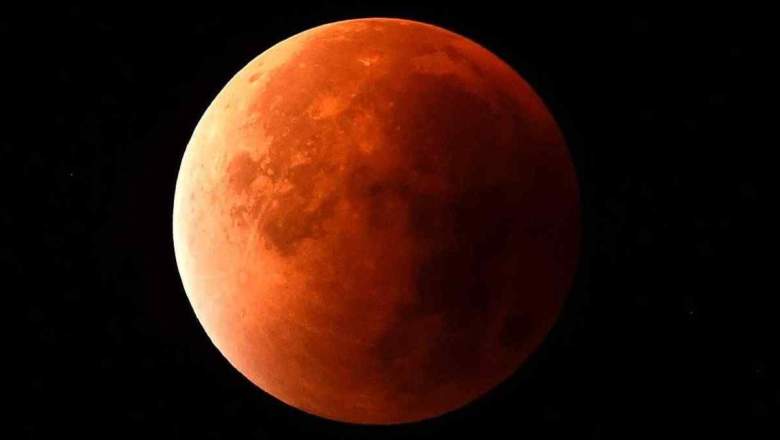
The Super Flower Blood Moon or total lunar eclipse is happening tonight and will be visible in limited parts of the United States. This is the only total lunar eclipse that you’ll see in 2021 and you’ll have to wait until 2022 for the next one. But do you need to take any precautions when you’re looking at the lunar eclipse, like you need to do for a solar eclipse?
No, You Don’t Need Special Glasses to View a Lunar Eclipse
No, you don’t need to wear special glasses to watch the lunar eclipse tonight. When viewing a lunar eclipse, you can look directly at the moon as it falls into the Earth’s shadow without hurting your eyes. This is the opposite of a solar eclipse, where you need special glasses to look at the sun even when it’s completely covered in shadow.
During a lunar eclipse, the Earth is between the moon and the sun, and all three objects are in perfect alignment, NASA shared. The earth creates a shadow on the moon’s surface, making it turn red. The lunar eclipse can only happen when there’s a full moon, but the Earth and the moon are rarely in the right alignment to create a perfect eclipse.
When you’re looking at a lunar eclipse, you’re only looking at the moon. Since looking at the moon with the naked eye is safe, you don’t need to wear special glasses, NASA explained. So no, you won’t go blind if you look directly at the lunar eclipse to see the beautiful red moon.
A solar eclipse is dangerous because, in contrast, you’re looking directly at the sun, Time explained. To look at a solar eclipse, you need special solar filters or eclipse glasses. If you look at the sun directly during an eclipse, you risk burning your retina, which can be temporary or permanent. It may take 12 hours for symptoms to start appearing.
When Is the Eclipse?
The moment of the greatest total lunar eclipse will take place for about 15 minutes on Wednesday, May 26, between 4:11 and 4:26 a.m. Pacific, NASA shared. (This translates to 5:11-5:26 a.m. Mountain, 6:11-6:26 a.m. Central, 7:11-7:26 a.m Eastern.)
Here’s a timeline for the various phases of the lunar eclipse and blood moon tonight, according to NASA:
- At 1:46 a.m. Pacific, the eclipse begins.
- The moon enters the darkest part of the Earth’s shadow around 2:45 a.m. Pacific
- At about 3:20 a.m. Pacific, the moon is 50% covered by the Earth’s shadow
- Totality takes place between 4:11 and 4:26 a.m. Pacific
- At about 5:16 a.m. Pacific, the moon is 50% covered by the Earth’s shadow
- The eclipse ends at 5:53 a.m. Pacific
Unfortunately, this eclipse isn’t viewable across the entire United States. According to NASA, the totality “will be visible near moonset in the western United States and Canada, all of Mexico, most of Central America and Ecuador, western Peru, and southern Chile and Argentina.”
Australia, New Zealand, Hawaii, and the rest of the Pacific Islands will be able to see the entire eclipse from start to finish.
READ NEXT: The latest COVID-19 deaths, cases, and updates